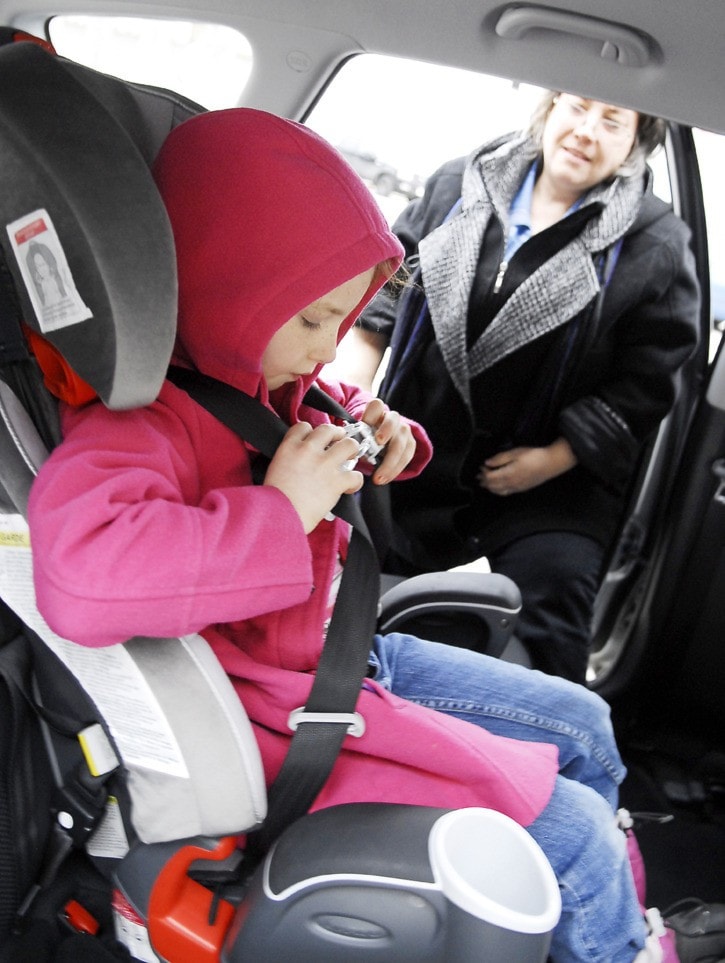Updated child car seat safety regulations came into force on Jan. 1 but there is no rush for parents to go out and purchase a new seat.
Given that previous regulations provided a high level of safety for children for many years, current child car seats will continue to provide excellent protection throughout their useful life, said certified child passenger safety educator, Anne Johnson.
“Parents don’t have to do anything, other than read the instructions really well on their car seats and keep their children in car seats as long as possible,” she said. “What is most important is that people use the most appropriate seat and use it properly.”
The new regulations provide that seats will be able to accommodate children for a longer period of time, as well as heavier children.
Manufacturers of the care seats have been working under the new standards for some time — nearly two years — so many of the car seats sold in the last two years already meet the requirements.
However, a child car seat should be replaced if it was installed in a vehicle involved in a collision. If the shell or materials on the seat are ripped or damaged, it should be replaced.
Parents should also check the expiry date of the seat and be sure to replace it when it reaches that date.
The updated regulations are part of a regular process of reviewing child safety standards while using the most up-to-date technology available for testing.
The updates include aligning elements with those in the United States and incorporating specific Canadian testing requirements. The major changes include:
• a new testing requirement using a three-point seatbelt to secure car seats in vehicles;
• changes to child seats’ dynamic testing to adopt most of the U.S. testing parameters;
• changing the definition of an infant from nine kg to 10 kg;
• an increase in the maximum allowable weight limit of child seats from 22 kg to 30 kg;
• introducing dynamic testing requirements for booster seats; and
• allowing harnesses to be certified for use on school buses by special needs children.
Parents should be aware of the guidelines for child seats, ensure that their child is in the seat appropriate for his or her size, and ensure that seats are installed and used properly.
More information can be found on Transport Canada’s Keep Kids Safe Web page at www.tc.gc.ca/eng/roadsafety/safedrivers-childsafety-car-time-stages-1083.htm.
